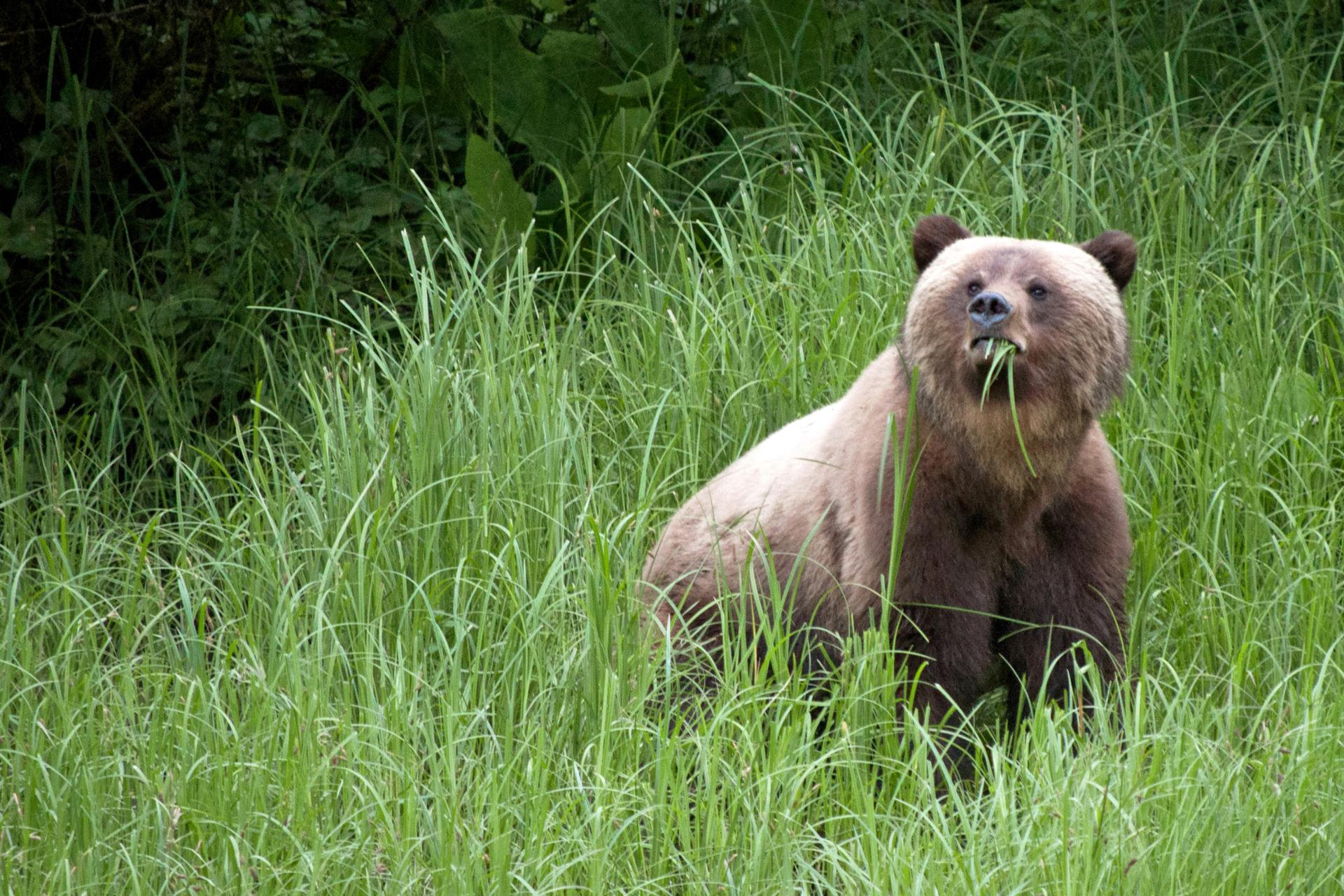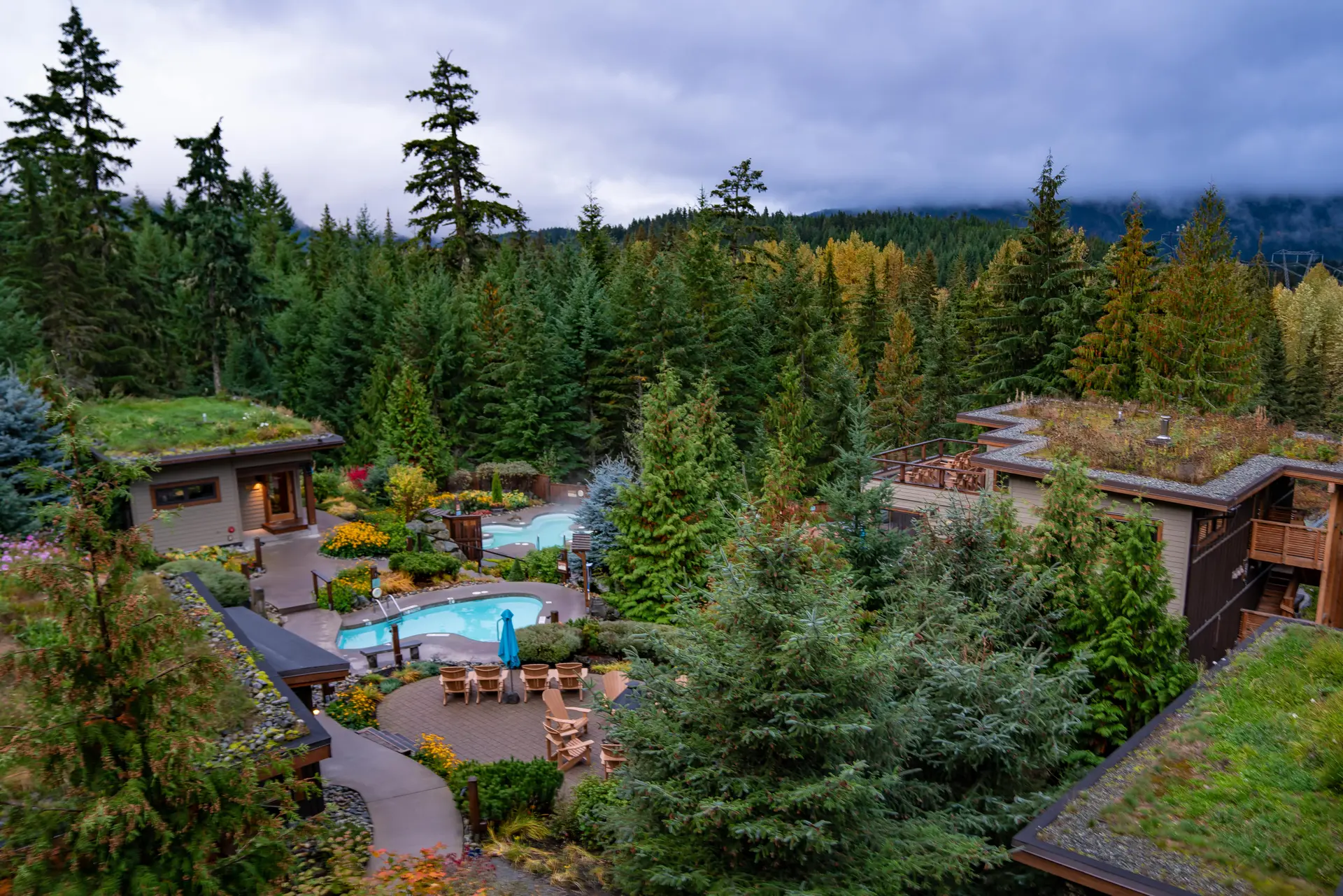Top places to spot bears in British Columbia

This post originally appeared on the Hello BC website.
Imagine watching a cloud of mist escape from an exhaling black bear. Or hearing a thud as the ground vibrates under the giant paws of a grizzly lumbering along the shore. Picture yourself gazing upon an elusive Spirit bear in the heart of the Great Bear Rainforest. British Columbia's expert guides can lead you to these soul-stirring experiences.
In this province's vast wilderness, bears can be seen almost anywhere. But here are some of the best places to connect with a guide and head out with your camera.
Khutzeymateen Grizzly Sanctuary
What to expect: The Khutzeymateen is a remarkable bear viewing experience. Canada's first designated grizzly bear sanctuary -- accessible by water only -- it is home to between 50 and 60 grizzlies. Access to the river estuary and the protected areas of the park is limited to a handful of licensed operators, including Sunchaser Charters, Bluewater Adventures, and Prince Rupert Adventure Tours. Bring your camera and spend a day photographing these powerful animals, or opt for a multi-day ocean adventure. Tours leave from Prince Rupert on Kaien Island.
When to go: May through September
Getting here: The sanctuary is located 45 kilometres (28 miles) northeast of Prince Rupert. Access to Prince Rupert is along Highway 16, eight hours west of Prince George. Prince Rupert can also be accessed by seaplane, or by BC Ferries from Port Hardy, on the northern tip of Vancouver Island.
Great Bear Rainforest
What to expect: The Great Bear Rainforest stretches some 400 kilometres (250 miles) along the central and northern coast of British Columbia from Knight Inlet to the Alaska Panhandle. This vast, pristine wilderness--about the size of Ireland--encompasses a quarter of the world's coastal temperate rainforest. One prime viewing area within the Great Bear is the remote Bella Coola Valley, where you can witness massive grizzlies feasting on salmon as you drift down the Atnarko River. Or for a rare treat, take a tour from nearby Klemtu in search of the elusive Kermode (Spirit) bear, a black bear with a unique white coat.
When to go: August through October
Getting here: Bella Coola is located at the western terminus of Highway 20, approximately 6.5 hours west of Williams Lake. Bella Coola can also be accessed by air, or via BC Ferries from Port Hardy on the northern tip of Vancouver Island.
Whistler
What to expect: The forests surrounding Whistler Village are home to some 60 black bears, and sightings are not uncommon. Book a 4X4 tour into the Whistler wilderness in search of these massive residents, or sit on a patio in the village and look up into the hills. You may get lucky. Keep your eyes peeled from a gondola perch as you ride into the alpine, or drive 15 minutes south: the road into the Callaghan Valley is known locally as a great place to spot bears.
When to go: May through October
Getting here: Whistler is located along the Sea-to-Sky Highway, about 90 minutes north of Vancouver.
Pacific Rim National Park Reserve
What to expect: The area around Pacific Rim is home to a large population of black bears. Leave from the Tofino harbour and travel the calm, protected waters of Clayoquot Sound, or from Ucluelet toward the rocky shores of Barkley Sound. From a safe distance, watch bears forage for some of their favourite delicacies, including rock crabs; boats stay close enough to shore to give passengers a good look without disturbing the bears. Also pay attention as you drive into and out of town, as you may spot bears from the highway.
When to go: mid-April through October
Getting here: Pacific Rim National Park Reserve is located off Highway 4 on the west coast of Vancouver Island. By car, it's about three hours from Nanaimo, which is accessible from the mainland via BC Ferries. The area is also accessible by air.
Knight Inlet
What to expect: This tucked-away inlet is home to a large number of grizzlies, and it's not unheard of here to view dozens of bears on a single trip. See the bears from the water as they feed on sedge grasses in the estuary in the spring, or along logging roads in the summer. Summer months have the added benefit of being prime time for Orca sightings in the area. In the fall, watch from viewing platforms near spawning channels as grizzlies catch salmon in the Glendale River. Stay at the Knight Inlet Lodge for the trip of a lifetime.
When to go: May through October
Getting here: Knight Inlet is located on the BC mainland, but tours generally leave from the east coast of Vancouver Island as there are no roads into this remote area. Access to Vancouver Island is via BC Ferries from Vancouver. Tours leave from Campbell River, or further north from the Telegraph Cove area.
Stewart/Hyder
What to expect: The communities of Stewart, BC, and Hyder, Alaska, enjoy a special relationship. They are about 3.2 kilometres (2 miles) apart but, in many ways, they operate as a single community. In Hyder, there is a bear viewing platform at the Fish Creek Wildlife Observation Site where black and grizzly bears can be seen fishing for salmon. On-site Forest Service staffers can answer your questions. While you're in the area, be sure to check out Bear Glacier Provincial Park en route to Stewart, and the Salmon Glacier about an hour north of town via Hyder.
When to go: Mid-July through early September
Getting here: Stewart is located along the BC/Alaska border, on Highway 37A off the Stewart-Cassiar Highway. Stewart is about a four-hour drive northwest of Smithers.
